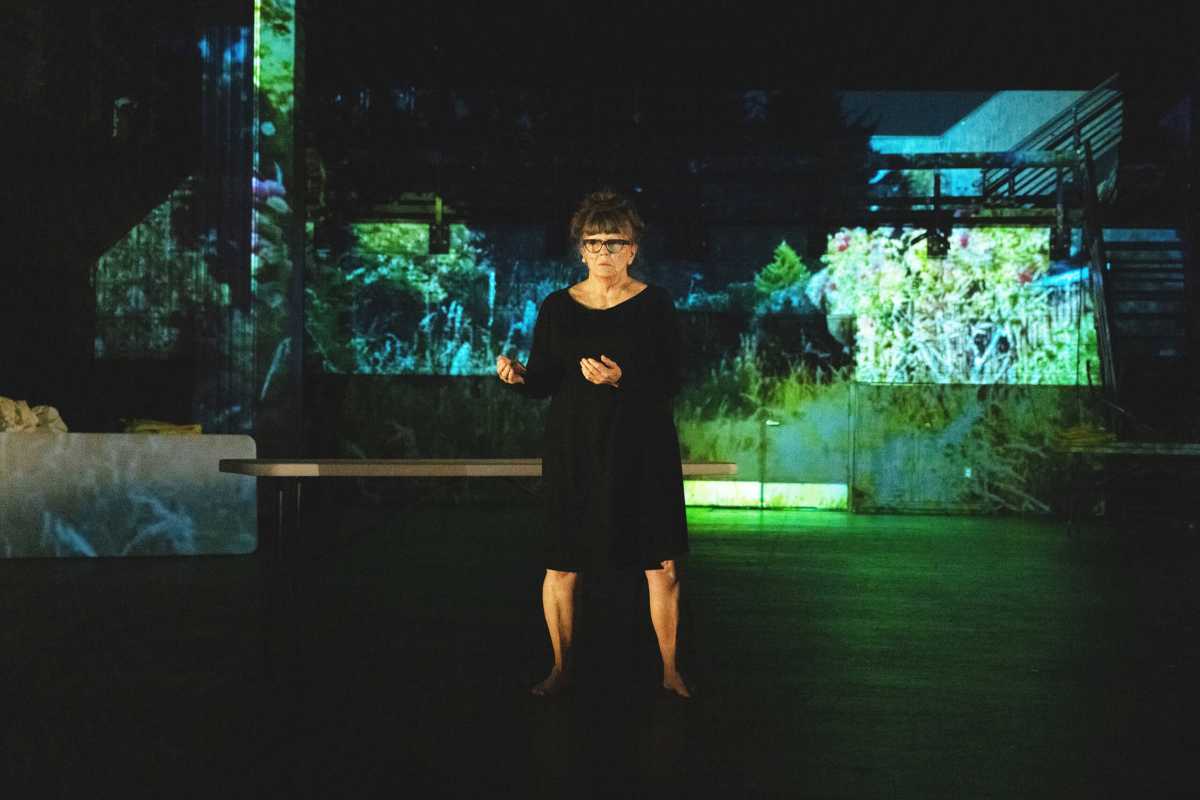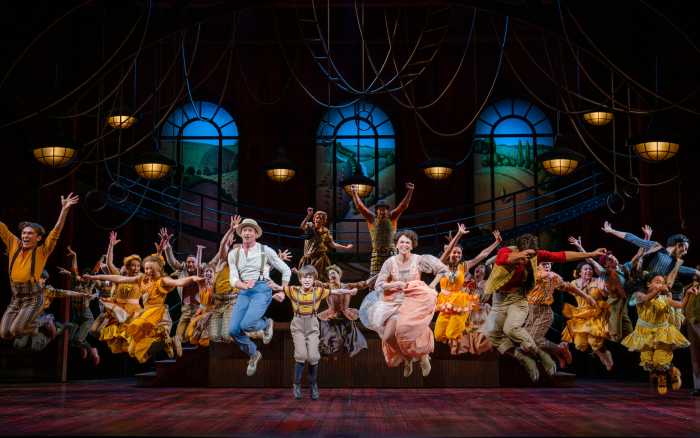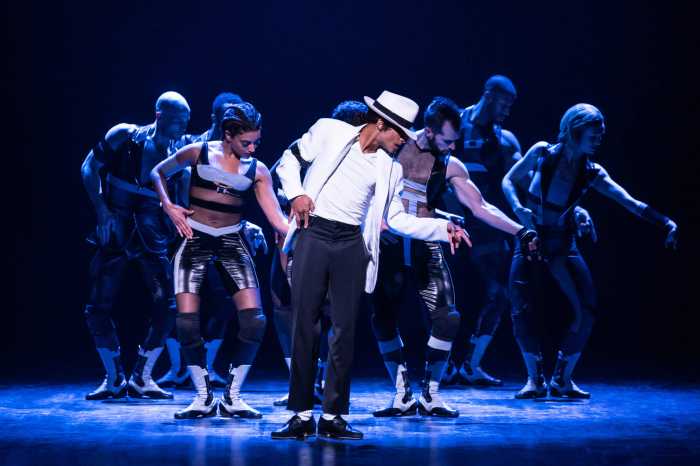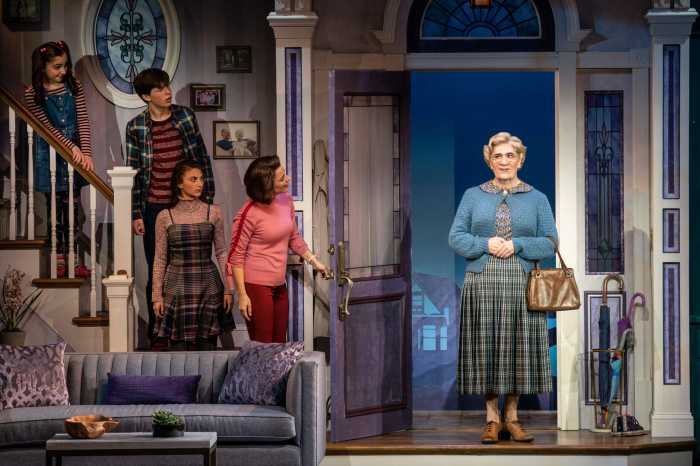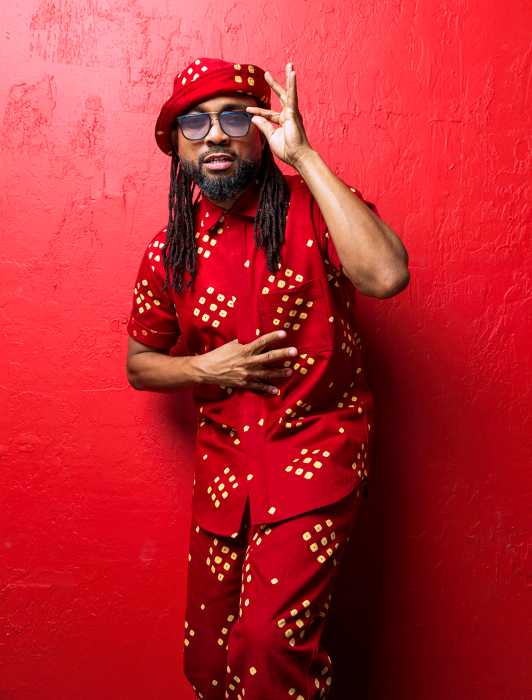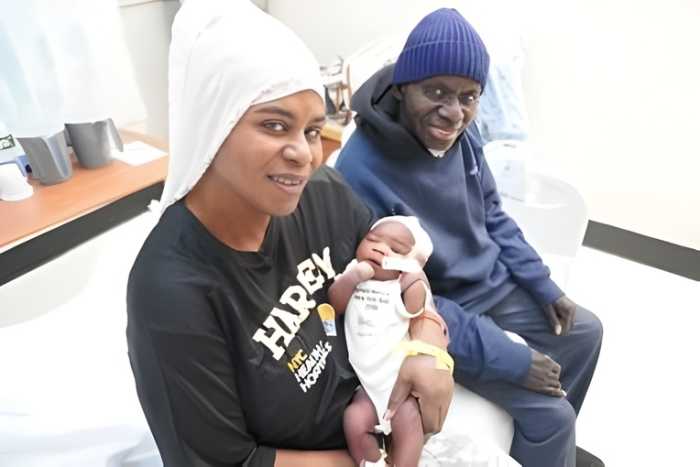Split Britches, the iconic lesbian theater company, is in the midst of the New York run of their latest show, “Last Gasp: Recalibration” at La MaMa, running through October 30. It’s been a long journey for the work, the latest (or maybe even the last?) from the long-running duo of Lois Weaver and Peggy Shaw.
The show was meant to open in the spring of 2020, with runs in London and New York City. The company was putting the finishing touches on it when the world shut down.
Lois Weaver, who founded Split Britches in 1980 with Shaw and Deb Margolin, had a lovely a conversation with Gay City News to talk about what happened next, what’s happening now, and to share her thoughts on what might come next.
Where were you in the planning of “Last Gasp” when the pandemic hit?
We were in London [where Weaver is professor of Contemporary Performance Practice at Queen Mary, University of London] and had structured everything. I had edited all of Peggy’s text. I was still writing my text to go along with the choreography we created with Morgan Thorsen. I was going to be in London another couple of weeks, then come to New York and then we’d open.
When did the idea of streaming the show occur to you? Or presenting it as a film?
It kind of decided itself; I mean, our choreographer Morgan went back to New York, and we had to decide whether Peggy would go back to New York, which was the epicenter of the pandemic at the time, or whether she would stay with me.
We didn’t really have a place for both of us to live at that point, so someone gave us an old house, an old, empty house that they were planning to renovate, and we moved into this old house, and it was just me and Peggy, and we decided we wanted to keep working on the show.
We set up some Zoom sessions with our designer and production manager, so she would be on Zoom on her houseboat, and we would be in the house, and I said, “Well, let’s work through each scene and we can use the Zoom frame as the rehearsal room.” As we began to do that, we began to get excited, because we could construct the images so carefully in the frame. We recorded a couple of those scenes in sequence, and we liked it a lot.
So that’s when we decided: well, let’s keep doing this and we’ll either release it as a series or sequence, but by the end, we decided to stick it all together into a film. In a sense, it really felt like it made itself.
Split Britches presented the film as “Last Gasp: WFH” on the La MaMa website to an enthusiastic international audience. Were you pleased with how the film version turned out? I think it was probably the best version of streamed or online theater I saw during the pandemic.
Thank you. I just was blown away by it. It gave me all kinds of great ideas and feelings
People said that they thought it was one of the best uses of performance in the context of the Zoom, and I think part of that is because we weren’t recording something meant for the stage. It wasn’t on the stage yet: it was actually meant for the person on the other end of the Zoom. The element of the performance was constructed for Zoom.
I think we gave over to the possibilities and got very excited by that. I started talking about how I thought Zoom is the proscenium arch of the 21st century because you could make it for that format. As a director, I loved it. I’m a director who’s also onstage, so I never get to see the stage picture. So I was able to really fine tune and control that. And people did respond to it. I think what we did is something more intimate, and I think the house itself made it feel intimate: you get that we weren’t on a stage. We were at home, like everybody else was at home, and this particular home had a real personality that came through on the screen.
Afterward, how did you approach the piece when you decided to present it live, as originally intended? What changed when you went back into rehearsal?
When we went back into it, we decided we’d use some video from the film, because we liked the idea of a hybrid, and it would give us the opportunity to “recalibrate,” as we say in the title. We could talk about presence and absence: Are we present? Are we in the room or are we elsewhere? And what does that intimacy mean? It gave us an opportunity to layer that into some sort of the experience that we’d all been through.
The other change we’re making is because the house in London was so much a part of the show on film, we didn’t want to replicate it because we didn’t want it to be realistic in that sense. So we thought: what would happen if we walked into an empty theater in the same way that we walked into an empty house?
We’re trying to play with the aspects of an empty theater. It’s almost as if we walked in after being away for two years of being locked down, there’s this empty theater with a few tables and stuff and a bed sheet. The idea of walking into a place and inhabiting it is something that’s a big part of what we’re trying to do, and I love that stuff.
What did you miss about having a live audience when you were doing the streaming performance? Now that you’re working in front of a live audience again [at the Barbican in London, and here in New York], what kind of things did you notice?
The obvious thing is there was more humor. In the movement pieces, I don’t interact with the audience as much as I normally do. I do these things called “micro dance lectures” — each of those little “how tos” that I did in the film. So I do talk to the audience in that almost-a-lecture sort of way.
Elisabeth Vincentelli in the “New York Times” called the streamed show “surprisingly entertaining,” and I thought: of course, the show is entertaining, what’s the surprise?
Maybe she was talking about watching it on Zoom. And of course, it was called “Last Gasp.” It really was a last gasp in a lot of ways, but once the pandemic came, it meant a whole lot of different things.
How do you incorporate what’s going on with you and your bodies and what’s going on in the world with the creative process — or is that too big a question?
No, it’s something we’ve been at for a while now. I mean just talking about Peggy’s inability to remember lines after her stroke, it gave her so much stress it didn’t seem to be worth it, and then we said, “Who said that an actor has to get up there and remember all these lines?” There are other ways to go about this.
In “Ruff,” (2013), Peggy had all her words on a screen. And in a more subtle way, I was in the audience as a person of care, if she needed it. If she got lost, I could point her in the right direction. We’ve been trying to incorporate that kind of thing into the work all along.
We started out making this as two separate solo shows with Peggy, and I think she’s accepted her age, in a way, by saying, I can’t be on stage full-time anymore.
I feel like I’m challenging it, but not in that “I wanna stay young” kind of way, but trying to push the boundaries of what it means to be 73 by dancing. I’m doing a lot of dancing, a lot of work on stage: moving tables. There’s a line in the show: Do any of us know what to expect of an aging body? I think that’s true. We don’t know what to expect, so I think I’m trying to go a little bit against expectations and Peggy’s going with them in a sense.
So much of your work seems to be about moving more into caring about people and helping them understand what we’re going through. You use the format of “long tables” for public discussion, and host Care Cafes for anyone who needs them, and have “porch sittings.” Is that something you feel is an integral part of the work?
Absolutely. I think that started with when I did Tammy WhyNot (described on the Split Britches website as someone who “facilitates public engagement and promotes subversive expertise as methods of activism. Tammy has accompanied Lois Weaver since 1978 as alter-ego, performance partner and research associate.”)
I worked on “What Tammy Needs to Know,” then “What Tammy Needs to Know About Getting Older and Having Sex.” That’s when I got a taste for what would happen if I brought the audience into the dialogue of the performance and how much I loved that. Then sort of parallel to that, I was starting to develop these long tables and porch sittings and Care Cafes, which for me was working with ideas around performance to create formats for people to have better conversations in public.
Part of that comes from a class issue for me, where I feel like marginalized people get left out of the public conversation, sometimes because we’re shy, because we’re literally excluded, because we’re not invited to the table. I wanted to create comfortable situations where people felt like they could speak up and talk in public, and part of that is a care role and part of that comes from being a Southerner, I suppose, and having been raised to be a good host.
My mother modeled that, and I still feel that way, and I feel that way about the theater. I want people to feel looked after when they come into the house, and I also want people to feel like everyone has a place at the table. Those are those are sort of my governing principles. I suppose I have a real hunger for just that kind of interaction with an audience: not knowing what it’s going to be, not knowing what they’re going to say, not knowing if it’s going to work.
In terms of what happens after this, are you going to keep on developing more work? Are you going to keep teaching? What do you see coming up for you as an artist and a caregiver?
We’ve started to build a website where each of the collaborators on “Last Gasp” have their own room where they can present their own work. It’s sort of like a house that becomes a gallery or a studio, and we’ll also have rooms for invited artists to come and show things. It’s also a home for my digital “public service” or “public address systems,” so there will be a digital long table, a digital Care Café, digital porch sitting in the context of a funny little old house.
We fell in love a little bit with being online because that’s another way of giving access to people who still can’t go out. We really loved having that access when we were doing the streaming of the film. It reached an audience we don’t normally get to reach, and we want to keep trying to do that so it’s a sort of gentle at-home kind of project.
I will keep teaching. I keep thinking I should retire and just do my performance and developmental work, but I love being in the classroom. I love teaching. I love interaction with the students. I love my colleagues at Queen Mary, so I think I’ll just keep doing it as long as I can. I always said I retired in my 20s and 30s so I’m going to have to work until I’m 90!
I’m going to have to have a day job for some time, but I don’t intend to ever retire from my real work. It’s what gives me pleasure.
It’s worth it, because the kind of work that we do is different than more conventional theater, but it relaxes you. You don’t really know what’s going to happen next, but whatever it is, you can handle it. It doesn’t have to be this hour and a half of perfection. There’s some breakage and slippage in there and I that’s what I love about doing that.
Are there any questions I forgot to ask you?
That’s a nice question! No, but I would like to say that with this piece, I wrote it. Peggy and I did all the editing and sort of drafting of the shape, but it was a beautiful collaboration between a lot of people. We had the designer, who then became the editor alongside me on the film, but now she’s here doing the lights and designing this set and running the show! And Viv Stoll, who’s fantastic composer and sound designer, and Morgan Thorson. Sometimes that just works, that combination of people who love being with each other. Everybody has ideas, and sometimes they’re crap, but nobody makes fun of that, and I just want to highlight that the beauty of that.
“Last Gasp: Recalibration” | Runs through October 30 | The Ellen Stewart Theatre at La MaMa, 66 E. 4th Street, 2nd floor | $30 for adults; $25 f0r students/seniors
Writers and Performers: Lois Weaver and Peggy Shaw
Director: Lois Weaver
Visual/Lighting Design: Nao Nagai
Sound/Music Design: Vivian Stoll
Choreography: Morgan Thorson
Costumes: Susan Young
Design Consultation: Matt Delbridge

